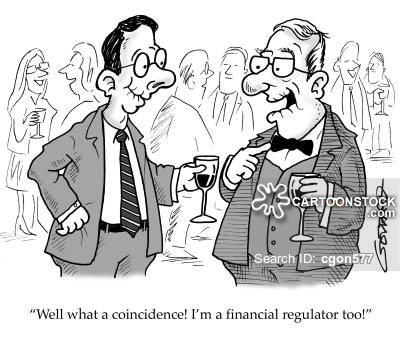Contents:


The outstanding shares total is used to calculate key financial metrics such as earnings per share and market capitalization. Fully diluted shares outstanding is the total number of shares a company would theoretically have if all dilutive securities were exercised and converted into shares. Dilutive securities include options, warrants, convertible debt, and anything else that can be converted into shares. For a financial analyst, it is important to have a solid understanding of the difference between basic and fully diluted shares and what it means for key metrics like EPS. Before their availability on the secondary market, shares are authorized, issued, and, finally, purchased by investors who became equity owners or shareholders of the issuing company. Shareholders of common stock typically possess the right to participate in annual shareholders meetings and contribute toward the election of the company’s board of directors.
Calculating The Fair Value Of CSX Corporation (NASDAQ:CSX) – Simply Wall St
Calculating The Fair Value Of CSX Corporation (NASDAQ:CSX).
Posted: Mon, 27 Mar 2023 07:00:00 GMT [source]
Another way of making money in the stock market is by buying call or put options. With a stock that shows impressive earnings per share growth, we recommend you consider buying call options. Contrarily, if the EPS growth is contracting, you might consider purchasing a put option. Our call option calculator estimates how much profit/loss you can make with this. Market cap is just the share price times the number of shares outstanding. As already described, Market Capitalization is Number of outstanding shares x Stock price.
Stocks In The TreasuryTreasury Stock is a stock repurchased by the issuance Company from its current shareholders that remains non-retired. Moreover, it is not considered while calculating the Company’s Earnings Per Share or dividends. The balance sheet is one of the key documents that investors use to evaluate a company, so it’s important to become familiar with it. Here is an example of how to calculate the diluted equity value of the company with RSUs.
Imagine a situation where the company exercises a share buyback at the end of the year. If that figure is taken and used to calculate EPS, then the EPS would be much higher and it would eventually amount to polishing the financial figures. Shares outstanding are used to determine a company’s market capitalization, i.e. the total value of a company’s equity, or equity value. Overall, shares outstanding is a metric used to calculate a company’s number of shares in circulation. It differs from other shares-related numbers, for example, issued, authorized and purchased shares. The number of shares outstanding is a crucial metric for various calculations.
What are Shares Outstanding?
Such actions impact the https://1investing.in/ Price as some are value accretive while others are dilutive. Overall, it helps determine the company’s market capitalization, which impacts the classification of the business. Shares outstanding include shares owned by retail and institutional investors and restricted shares held by company officials and employees. Changes in the composition of the holdings do not change the number of total shares outstanding. New share issues, the exercise of stock options, conversion, and cancellations through buybacks will change the figure.
Dividends on preferred stock are simply the monthly or quarterly payments obtained by the shareholders. If you happen to invest in companies on the stock market, you probably own quite a lot of shares. With the use of this earnings-per-share calculator, you will be able to assess their real value in just a few clicks.
- The U.S. Securities and Exchange Commission makes these available online.
- The total shares of common stock owned by these investors make up the outstanding shares.
- This is because the value of the shares is the same before and after the stock split.
- The offers that appear in this table are from partnerships from which Investopedia receives compensation.
- ABC Limited has an Authorized Share Capital of $ comprising shares of Face Value of $10 each.
- Restricted stock units are a type of equity compensation provided to employees to reward good performance and/or for completing a specified tenure with a company.
It also offered 3,000 shares to each of the two managing directors and has 5,600 treasury shares. Floating shares serve as a good representation of the company’s active shares or share turnover among various investors in the market, excluding parties holding substantial portions of equity. A share repurchase is when a company buys back its own shares from the marketplace, which increases the demand for the shares and the price. A buyback is a repurchase of outstanding shares by a company to reduce the number of shares on the market and increase the value of remaining shares. The company can increase or decrease the number of shares outstanding by issuing new shares or via share repurchases . Alphabet Shares Alphabet shares are offerings with different rights and qualities assigned to different classes of shares.
How to Calculate Outstanding Shares of Stock
Similarly, it can provide information about potential future share issues through the fully diluted numbers. However, these do not include stock repurchased by the company, known as treasury stock. Most companies report their outstanding shares in their financial statements. If you plan on raising money from venture capital firms, the number of issued and outstanding shares will be a factor used in determining their investment. This value plays a part in the price per share they are willing to pay and, consequently, how many shares of your company they receive for their investment. Weighted average shares outstanding refers to the number of shares of a company calculated after adjusting for changes in the share capital over a reporting period.
Calculating The Intrinsic Value Of Zhuzhou CRRC Times Electric Co., Ltd. (HKG:3898) – Simply Wall St
Calculating The Intrinsic Value Of Zhuzhou CRRC Times Electric Co., Ltd. (HKG: .
Posted: Mon, 10 Apr 2023 00:15:32 GMT [source]
Although you can usually look up the number of shares outstanding, that’s not always convenient. Besides, it is useful to know how the number of shares outstanding is determined. The dividend payout ratio is the measure of dividends paid out to shareholders relative to the company’s net income. Earnings per share is the portion of a company’s profit allocated to each outstanding share of common stock, serving as a profitability indicator. Investors may also look for trends in a company’s EPS growth over time to get a better idea of how profitable a company has been, how steadily earnings have grown, and the potential for future performance. A company with a steadily increasing EPS figure is considered to be a more reliable investment than one whose EPS is on the decline or varies substantially.
Outstanding shares of stock is the kind of stock issued by the company that is owned by investors, rather than by corporations themselves. Add the new shares issued as a result of the stock dividend to the shares already outstanding to find the number of shares outstanding after the stock dividend. In this example, add the 6,000 new shares to the 300,000 existing shares to find 306,000 shares are outstanding after the stock dividend. Stock dividends give a company a way to increase the number of shares outstanding and bump up the number of shares owned by each shareholder. But dividends don’t change the value of what each shareholder owns.
Related stock market topics
Therefore, the company currently has authorized 5,000 shares and has 2,000 shares issued and outstanding. John, as an investor, would like to calculate the company’s market capitalization and its earnings per share. The number of shares outstanding can be computed as either basic or fully diluted. The basic number of shares outstanding is simply the current number of shares available on the secondary market. On the other hand, the fully diluted shares outstanding calculation takes into account diluting securities such as convertibles (warrants, options, preferred shares, etc.). The total number of issued and treasury stock includes both common and preferred stock available in the company balance sheet.
Stock Buybacks: Recent Developments and Hot Topics for Issuers – JD Supra
Stock Buybacks: Recent Developments and Hot Topics for Issuers.
Posted: Wed, 12 Apr 2023 16:30:15 GMT [source]
The number of stocks outstanding is equal to the number of issued shares minus the number of shares held in the company’s treasury. Outstanding shares differ from Authorized as authorized shares are the number of shares a corporation is legally allowed to issue. In contrast, outstanding stocks are the ones already issued in the market. Finally, outstanding shares are different than authorized shares, or the number of shares that a corporation is legally allowed to issue. Outstanding stocks are the shares that are actually already out on the market. In an initial public offering, the stock price is set based on the company’s performance and net present value.
Warrants are instruments that give the holder a right to purchase more outstanding stock from the company’s treasury. Whenever warrants are activated, stocks outstanding increase while the number of treasury stocks decreases. If all these warrants are activated, XYZ will have to sell 100 shares from its treasury to the warrant holders. Once you know how to calculate the outstanding shares, you can use this number to calculate a number of valuation metrics, or measures of a company’s performance and future earnings potential.
It has the benefit of using actual numbers instead of projections. EPS is typically used by investors and analysts to gauge the financial strength of a company. In fact, it is sometimes known as the bottom line where a firm’s worth is concerned, both literally and figuratively. When these reserved shares have been assigned to employees, contractors, or advisors through a stock option or grant from the SIP, they are allocated shares. The life of common stock goes through a few phases, and understanding each step is important for putting the common-stock-outstanding number into proper perspective. Outstanding shares are the total number of shares of a company that are held and may be available on the secondary market.

The number of shares of common stock outstanding is a metric that tells us how many shares of a company are currently owned by investors. This can often be found in a company’s financial statements, but is not always readily available — rather, you may see terms like “issued shares” and “treasury shares” instead. Besides, it can be helpful to understand where the numbers you’re looking at came from. In the United States, the figures for outstanding shares are accessible from the Securities and Exchange Commission quarterly filings. Companies have an authorized shares limit from which they can issue shares. Once allotted, shareholders buy these shares to provide a company with finance.
Remember, you should look for a positive EBITDA margin, which is growing. That indicates a company that is doing better and better over time and might give you a considerable ROI in the near future. Market capitalization, or market cap refers to how much a …How to Calculate Market Capitalization.

Some accounting equation’ balance sheets list the common shares outstanding straight out. If that’s the case, congratulations, you don’t need to do any calculations. But usually you will need to pull several numbers from the balance sheet in order to calculate the total outstanding shares formula. Shares outstanding refers to the amount of stock held by shareholders, including restrictive shares held by company insiders. A company, however, may have authorized more shares than the number of outstanding but has not yet issued them. These may later appear in the form of a secondary offering, through converting convertible securities, or issued as part of employee compensation such as stock options.

A stock at higher value looks cheaper in a bull market and a stock with lower value looks expensive in a bear market. On this premise, a share of Heromoto trading at 2465 is undervalued in comparison to its intrinsic value as determined by the dividend discount calculation. Based on this, Heromoto’s current share price of 2465 is undervalued when compared to its Graham number of 2755. Find The Weighted Average NumberThe weighted average formula is simply summing up the products of each value with its respective weightage. Here, more significance is given to the weightage of the values rather than the variables themselves.
- In the end, as the number of outstanding shares decreases by 1,000, the company’s EPS increases by 6.89%.
- Preferred stock’s subdivisions are usually based on the various purchase prices, protective provisions, and other rights granted to the preferred stockholders.
- If that figure is taken and used to calculate EPS, then the EPS would be much higher and it would eventually amount to polishing the financial figures.
- In this example, add the 6,000 new shares to the 300,000 existing shares to find 306,000 shares are outstanding after the stock dividend.
- Another metric calculated using shares outstanding is the price-to-book (P/B) ratio.
As indicated by the name, issued shares are included within the definition of issued and outstanding shares. The calculation for common stock outstanding can seem a little daunting at first simply because there’s so much accounting jargon used to define and calculate it. And now that you’re equipped with this foundation of knowledge, all you need to do to figure it out is to go look it up on any company’s balance sheet in their 10-Q or 10-K filing. When you buy stock in a company, you are buying a percentage ownership in that business.
